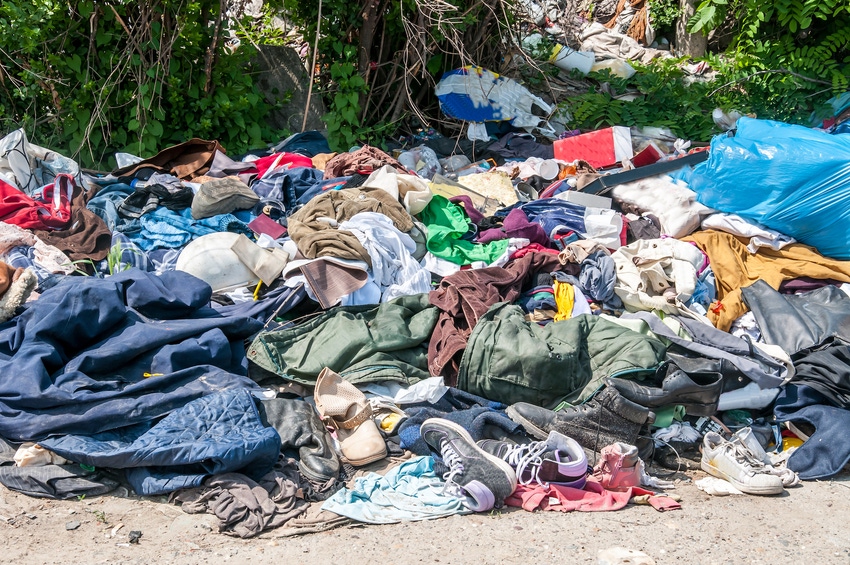Turning Textile Trash into Functional Coatings
Researchers find a way to upcycle clothing in a sustainable, closed-loop process.
November 3, 2023

Clothing and apparel is an industry that produces a significant amount of waste products each year, making up a significant percentage of the world's total solid waste.
To help solve this issue and find new ways to reuse textiles that would otherwise end up in the trash, scientists have developed a new method that allows them to break down old clothing chemically and reuse polyester compounds in a new way: to produce various coatings.
A team from Cornell University developed the method, which involves chemically decomposing textiles and eventually transforming this mixture into fire-resistant, anti-bacterial, or wrinkle-free coatings that could then be applied to clothes and fabrics.
While many people are under the assumption that clothes get recycled over and over again or reprocessed and turned into other textiles, "most of the time they are actually sent to other places as solid waste,” said Juan Hinestroza, a professor of fiber science & apparel design and director of the Textiles Nanotechnology Laboratory in Cornell's College of Human Ecology.
“Our main goal is to offer a pathway to reuse this material," he said, noting that recyclers who claim to be repurposing the material often end up illegally dumping textiles as trash in countries in Asia and Africa.
'Closed-Loop' Process for Textile Trash Recycling
The process developed by Hinestroza and his team—including Cornell doctoral student Yelin Ko, who works in the field of human centered design; Phillip Milner, Cornell assistant professor of chemistry and chemical biology; and Tyler Azbell, a doctoral student in Milner’s lab—is known as controlled crystallization.
Contributing to the sustainability aim of the research is that the process is one that is "closed-loop," in which discarded materials may be reused and contribute to a circular economy, Hinestroza said.
The process also disproves something that scientists previously thought: that the dyes and impurities in the mix would interfere with the process. However, the proof-of-principle detailed by the team in a paper published in the journal Industrial & Engineering Chemistry Research demonstrates that the polyester-derived linkers find and then attach to metal compounds in solution, despite other materials that are present.
The method involves several steps. First, it requires cutting textiles into pieces and chemically decomposing them into a soup of raw materials, dyes, additives, dirt, and esters. Then, researchers add a metal solution that shares an affinity with building blocks from the polyester. These reactions selectively link together metal compounds, forming tiny cages called metal-organic frameworks (MOFs) that settle to the bottom of the brew.
Scientists can then use these MOFs to make coatings, which can be tweaked structurally for specific uses—such as anti-bacterial, fire-resistant, or wrinkle-free. Eventually in the future, the team wants to create a universal coating using the process that will serve various purposes. However, Hinestroza acknowledged that "we are still far away from that.”
About the Author(s)
You May Also Like



